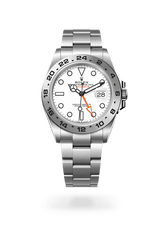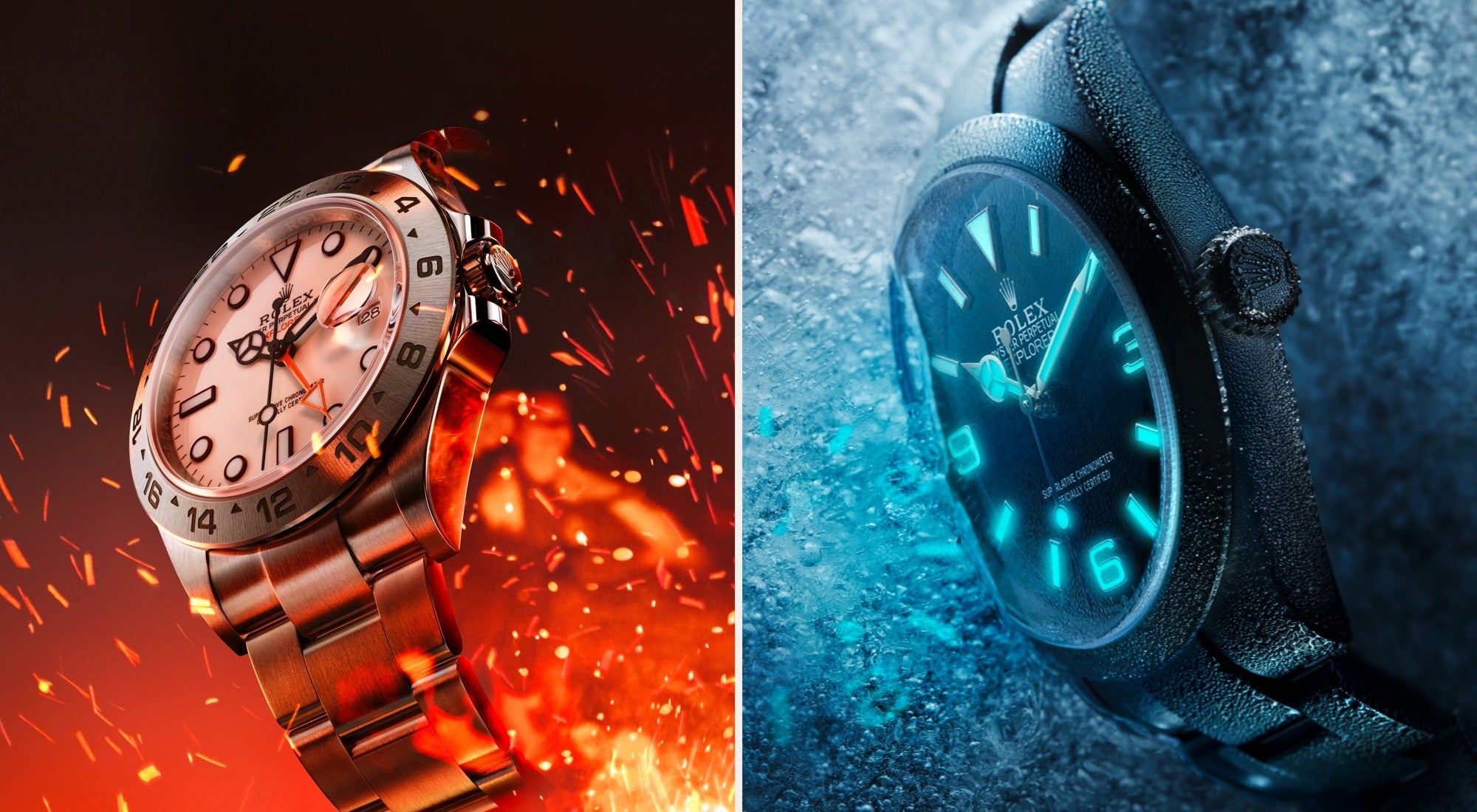Rolex Explorer
A selection of models
Rolex Explorer
Adventure on a grand scale
The Oyster Perpetual Explorer and Oyster Perpetual Explorer II evolved from Rolex’s deep involvement with exploration. They go where few people venture. The brand was able to test these watches in real life by equipping polar, mountaineering and caving expeditions over many years. Some of the world’s most intrepid explorers, mountaineers and scientists took these watches to places that tested their reliability in the toughest conditions.

Rolex
Explorer
Oyster, 36 mm, Oystersteel
Rolex
Explorer 40
Oyster, 40 mm, Oystersteel
Rolex
Explorer II
Oyster, 42 mm, OystersteelLegible and durable, Explorer and Explorer II watches are designed to accompany those who push back the boundaries of human knowledge.
From the 1930s, Rolex began to equip numerous expeditions with Oyster Perpetual watches. The feedback received was used to develop what became known as the Professional category: watches that serve as tools, such as the Explorer and Explorer II. Rolex watches have taken part in some of humanity’s greatest adventures. One such occasion was the 1953 expedition to Everest, led by Sir John Hunt, on which Sir Edmund Hillary and Tenzing Norgay become the first to summit the world’s highest mountain.


Designed for exploration
The Explorer, launched in 1953, sets itself apart with a simple design and a highly legible black dial with characteristic 3, 6 and 9 numerals and large index hour markers. It is a tool watch, created to tell time accurately, whatever the circumstances. Even in the dark, the dial is easy to read, thanks to the Chromalight display. Today, the Explorer is available in a 36 mm diameter – the size of the 1953 original model – as well as in a 40 mm diameter.
The Explorer II was introduced in 1971 and, in the same spirit as the Explorer, perpetuates the privileged relationship Rolex enjoys with exploration. Thanks to its 24-hour display comprising an additional, orange hour hand and an engraved bezel, the Explorer II allows the wearer to clearly distinguish daytime from night-time hours – a practical option in places where distinguishing day from night is difficult, such as at the poles at certain times of the year, and in caves – or to read the time in a second time zone.
Resisting the extremes
Watches in the Explorer range have constantly evolved to meet explorers’ needs, each time becoming more robust and reliable. The Explorer 36 is available in Oystersteel or in a yellow Rolesor version (combining Oystersteel and yellow gold), while the Explorer 40 and Explorer II are made exclusively in Oystersteel. Specially developed for Rolex, Oystersteel is a unique alloy with excellent anti-corrosion properties.


All three models are fitted with an Oyster bracelet, a three-piece link bracelet known for its robustness. Featuring the Rolex-designed and patented Oysterlock folding safety clasp, which prevents accidental opening, it is also equipped with the Easylink comfort extension link; developed by the brand, this allows the wearer to easily adjust the bracelet length by approximately 5 mm.
The Explorer 36 and Explorer 40 are equipped with calibre 3230 while the Explorer II features calibre 3285. Both are self-winding mechanical movements entirely developed and manufactured by Rolex. They offer a power reserve of about 70 hours.


Superlative Chronometer certification
Like all Rolex watches, the Explorer and Explorer II are covered by the Superlative Chronometer certification. This designation testifies that every watch leaving the brand’s workshops has successfully undergone a series of tests conducted by Rolex in its own laboratories, according to its own criteria. The Superlative Chronometer status is symbolized by the green seal that comes with every Rolex watch and is coupled with an international five-year guarantee.





















